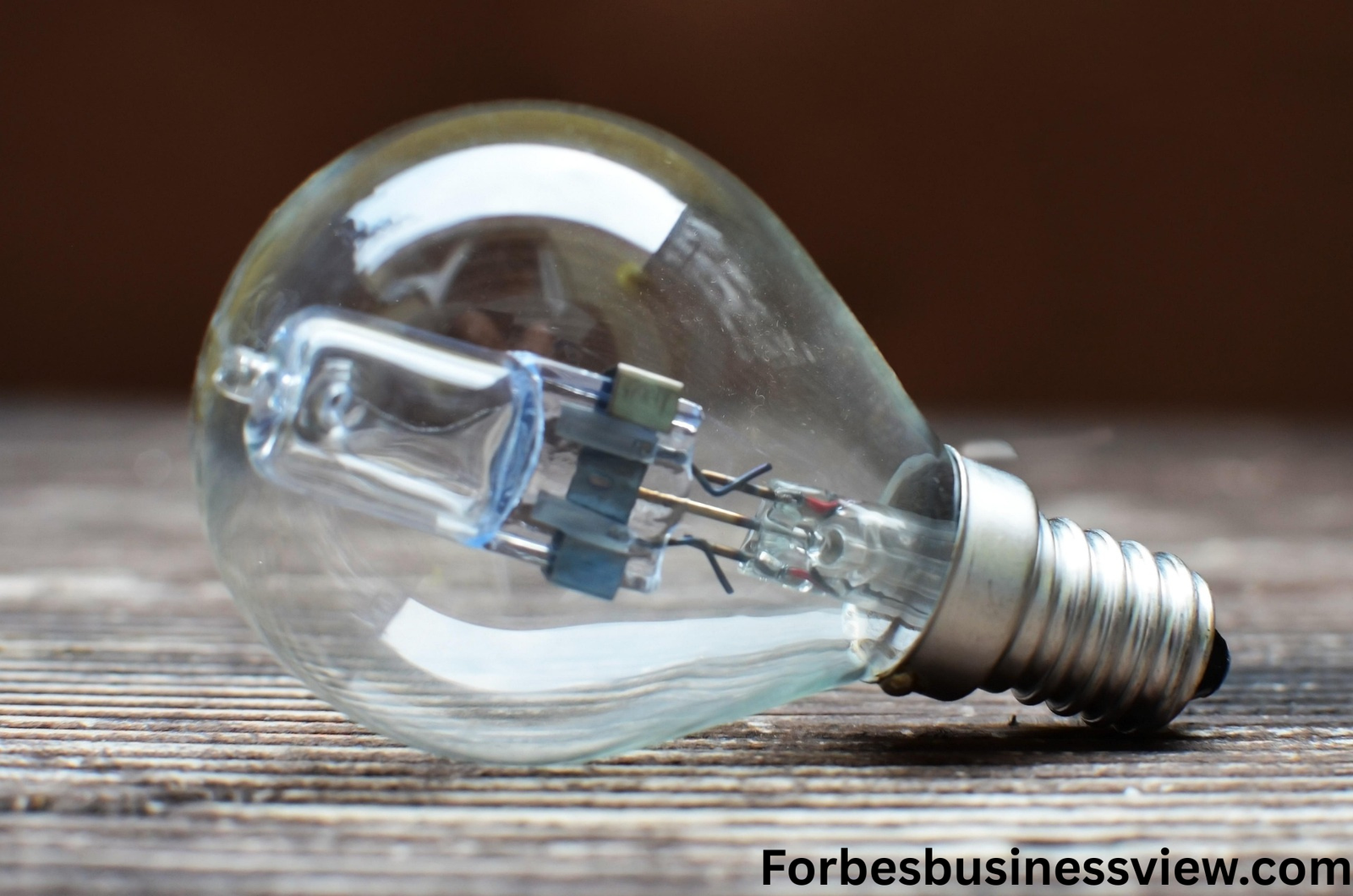Introduction
Metal halide bulbs are a powerful type of lighting that blend brightness, efficiency, and color accuracy. This article explains what makes a metal halide bulb unique, how it compares to alternatives, and which uses fit its strengths best.
What Is a Metal Halide Bulb?
A metal halide bulb is a special kind of high‑intensity discharge (HID) lamp. It creates light by sending electricity through a gaseous mix—typically mercury and metal halides—inside a quartz or ceramic arc tube. The result is a bright, white beam that outshines older bulb types in both efficiency and color rendering.
How Do Metal Halide Bulbs Work?
When powered on, the bulb begins with a noble gas—like argon—that helps form an electric arc. As the arc heats the gases, mercury and metal halides vaporize into plasma. This lights up the bulb with a vivid spectrum of visible colors. The bulb can take 1 to 15 minutes to reach nearly full brightness, known as warm‑up time. After switch‑off, older models need several minutes to cool before restarting—newer pulse‑start versions shrink this delay.
Types of Metal Halide Bulbs
Probe-Start
Common and reliable, probe‑start bulbs spark within the arc tube but require longer warm‑up and restrike times.
Pulse-Start
These offer quicker ignition and better energy efficiency. They reduce restart delay significantly.
Ceramic Metal Halide
Featuring a ceramic arc tube rather than quartz, they deliver better color quality and efficiency. Ideal for high‑end retail or exhibition spaces.
Specialized HMI Bulbs
Used in film and stage lighting, HMI bulbs are a form of metal halide. They combine mercury vapor with halides in quartz envelopes, yielding roughly 85–108 lumens per watt, with excellent color rendering.
Key Wattages: 400 Watt and 1000 Watt Metal Halide Bulbs
400 watt metal halide bulb
Common in both industrial and commercial settings, 400 W bulbs balance power and efficiency well.
1000 watt metal halide bulb
(also phrased as 1000 w watt metal halide bulb or 1000w metal halide bulb)
These bulbs deliver intense light over large areas—think stadiums, parking lots, or large warehouses. They’re also available in varieties like probe‑start and dimmable types.
Benefits of Metal Halide Bulbs
- High efficiency: They produce about 75–100 lumens per watt, 3–5 times more efficient than incandescents.
- Good color rendering (CRI ≥ 80): Colors appear natural, critical for stores or workspaces.
- Longer lifespan: Typically between 6,000 to 25,000 hours depending on type.
- Versatility: Used in sports arenas, parking lots, retail, warehouses, film sets, and specialized residential installations.
Drawbacks of Metal Halide Bulbs
- Slow warm‑up and restart: Taking up to 15 minutes to reach full brightness, and potentially similar time to restrike .
- Heat & UV risk: They get very hot and emit UV. Damaged fixtures may expose UV, risking materials or safety.
- Maintenance: Ballasts are required, especially for older models. Lamp aging can lead to color shift and will require replacement .
- Environmental concerns: Contain mercury; disposal must follow safe recycling practices.
How They Compare to Other Technologies
| Factor | Metal Halide Bulbs | LED Lighting | Mercury Vapor / Fluorescent |
|---|---|---|---|
| Warm‑up time | Several minutes | Instant | Varies |
| Energy efficiency | High | Higher | Lower |
| Lifespan | Moderate | Very long | Moderate |
| Color quality | Good to excellent | Excellent | Poor to fair |
| Maintenance cost | Moderate | Low | Moderate |
| Environmental risk | Mercury present | Lower risk | Mercury present |
- Metal halide vs. LED
LEDs win in energy savings, immediate brightness, and lifespan. But metal halides still offer stronger light and, often, lower upfront cost. - Metal halide vs. Mercury Vapor / Fluorescent
Metal halide has much better efficiency and color quality than mercury vapor or fluorescent lamps.
Applications and Ideal Use Cases
- Sports venues, stadiums, parking lots: Their intense, uniform daylight‑like light enhances visibility and safety.
- Industrial spaces and warehouses: Bright, efficient light is critical for productivity and safety.
- Retail and galleries: High CRI bulbs improve display quality.
- Film, stage, and special effects: HMI variants deliver high power and accurate color for cinematic lighting.
- Special residential: Occasionally used in garages or decorative outdoor fixtures for strong, broad illumination.
Installation, Safety, and Maintenance Tips
- Use proper ballast: Always pair the bulb with the correct ballast—magnetic or electronic depending on type.
- Allow warm‑up: Turn bulbs on early. Probe‑start types need longer warm‑ups; pulse‑start helps shorten delays.
- Monitor age and performance: Look for flicker, blackening, or cycling—signs it’s time to replace the bulb.
- Guard against heat and UV: Use fixtures with intact outer envelopes and shields to reduce exposure.
- Dispose responsibly: Due to mercury content, treat as hazardous waste and recycle following local regulations.
Retrofitting Tips: Switching from Metal Halide to LED
Many facilities replace metal halide bulbs with LED fixtures. Benefits include:
- Instant startup without warm‑up
- Longer lifespan and lower energy costs
- Reduced heat and environmental impact
- Often, ballast bypass is required during retrofit
Conclusion
Metal halide bulbs remain a dependable, high‑quality lighting choice for environments that require intense, color‑accurate, and efficient illumination. From 400 watt metal halide bulbs lighting up medium‑scale spaces to 1000 watt metal halide bulbs illuminating large venues, their versatility is exceptional. While LEDs are rising fast thanks to superior energy and maintenance profiles, metal halide still delivers where brightness and CRI are priorities. Understanding types, benefits, drawbacks, and safe handling are key to using them wisely. Whether you’re lighting a sports arena, a warehouse, or a film set, metal halide bulbs continue to shine in their niche—just with a warm‑up lag and a need for careful disposal.
Frequently Asked Questions (FAQs)
1. What’s the difference between a 400 watt metal halide bulb and a 1000 watt metal halide bulb?
Answer: A 400 W bulb emits less light and consumes less power—ideal for medium spaces. A 1000 W bulb is for large areas needing intense light—like stadiums or big warehouses.
2. Why do metal halide bulbs take time to reach full brightness?
Answer: They rely on vaporizing gases in the arc tube. It takes 1 to 15 minutes (warm-up time). Probe-start types take longer; pulse-start types warm faster and restart quicker.
3. Can I replace metal halide bulbs with LEDs?
Answer: Yes. LEDs start instantly, use less energy, last longer, and often require removing or bypassing the ballast when retrofitting.
4. Are metal halide bulbs environmentally safe?
Answer: They contain mercury. You must recycle them properly. Dispose them at hazardous-waste facilities—never in regular trash.
5. What types of metal halide bulbs offer the best color quality?
Answer: Ceramic metal halide and HMI bulbs lead in color accuracy and efficiency. Retail and film applications often choose these for their high-quality output.

